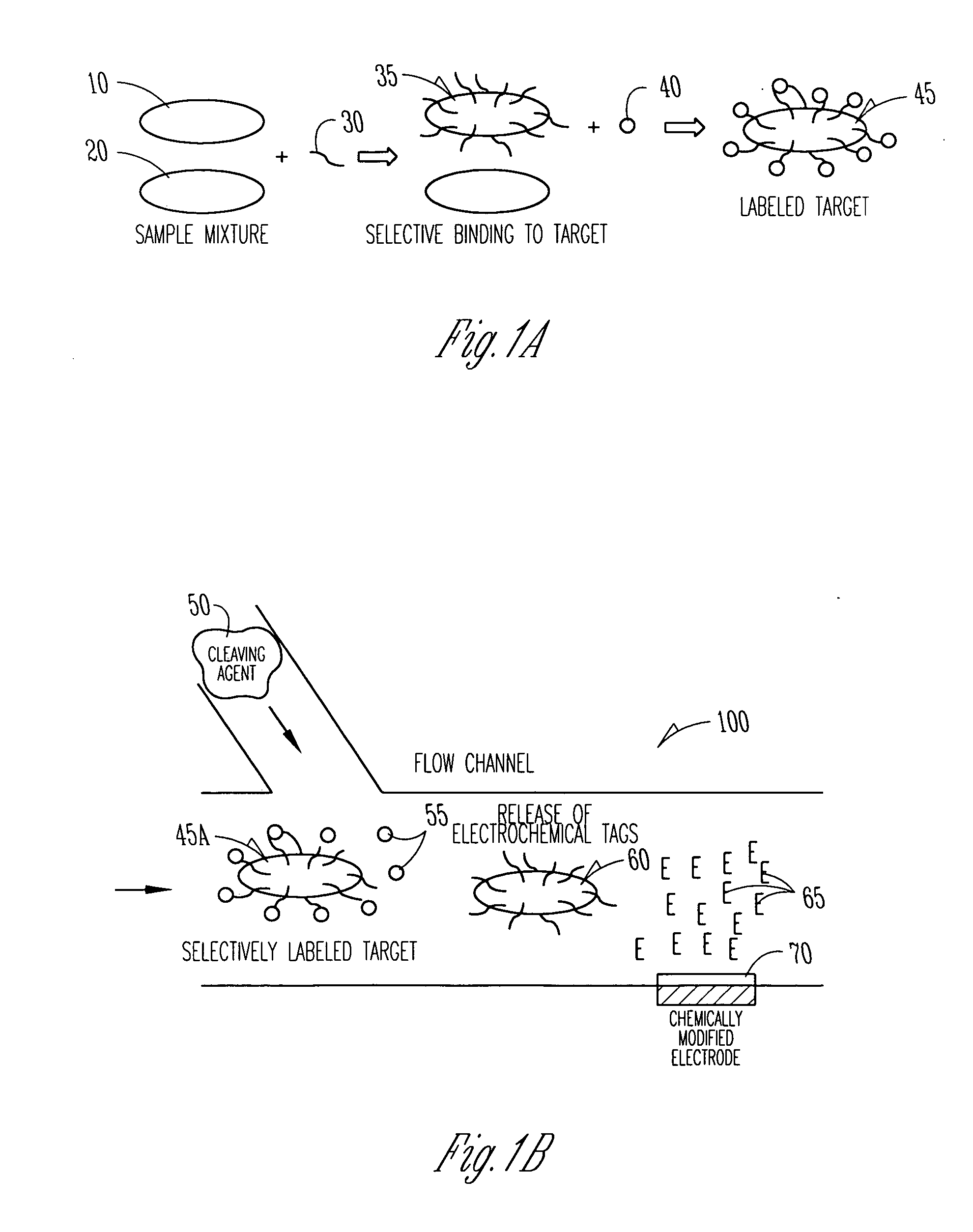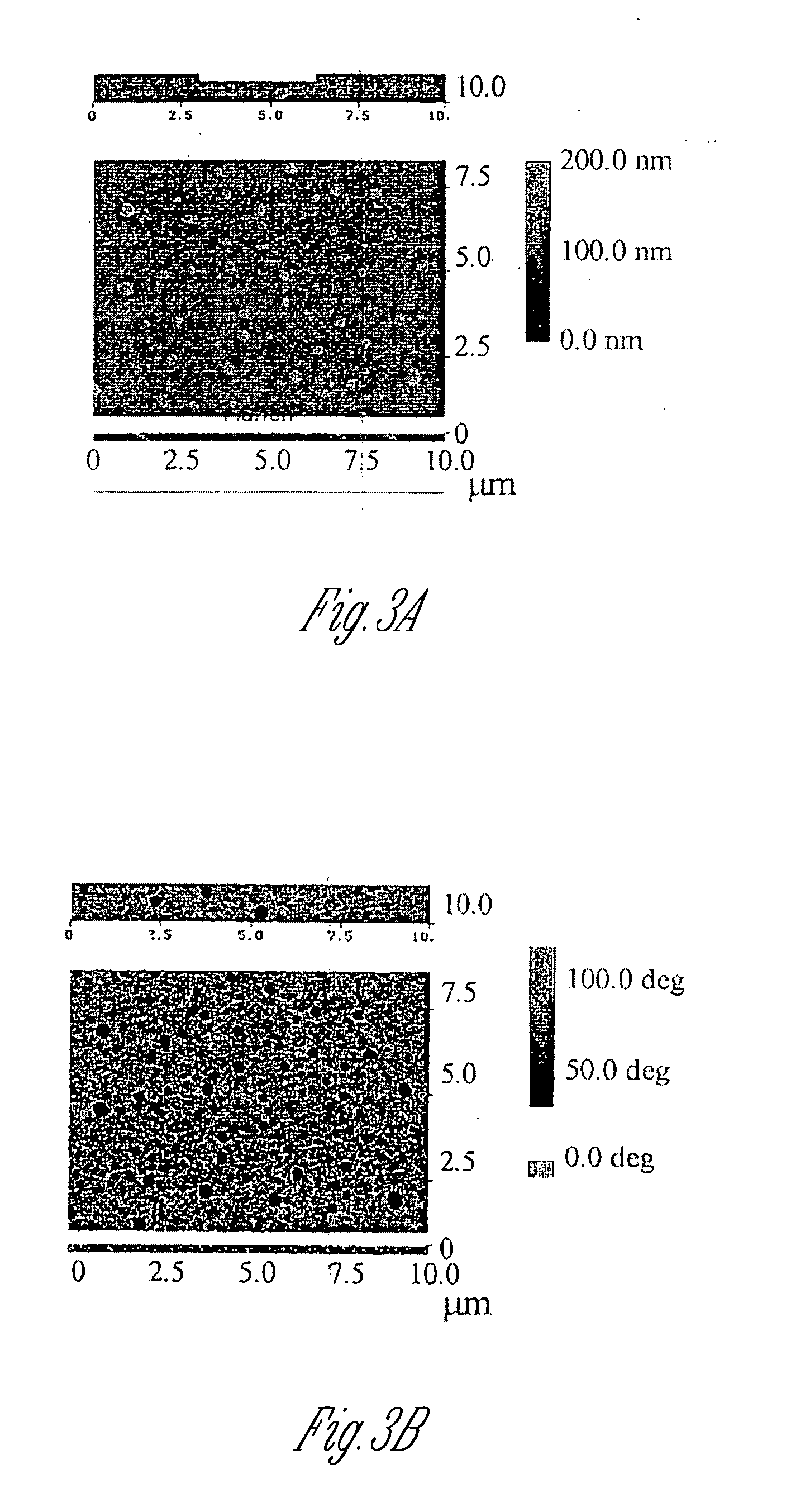Redox polymer nanoparticles
- Summary
- Abstract
- Description
- Claims
- Application Information
AI Technical Summary
Benefits of technology
Problems solved by technology
Method used
Image
Examples
example 1
Preparation of Poly(1,1′-dihexylferrocenyl) ester (PDE) Nanoparticles
[0158] A mixture of 0.04 mmol ferrocene dicarboxylic acid (FDA), 0.084 mmol 1,6-hexandiol, and 0.1 mol percent p-toluene sulfonic acid in 100 mL of 10 mM sodium phosphate buffer (pH=7.2) containing 4 mM sodium dodecylsulfate (SDS) surfactant was stirred until an emulsion resulted. The emulsion was then heated at 80° C. for 30 minutes with gentle stirring and allowed to cool. The resulting mixture was separated by simple filtration and the readily filterable redox polymer (nanoparticle) particulate product was characterized further and as described below. Alternatively, the resulting mixture could be used directly as a source of redox polymer nanoparticles.
Preparation of Copolyester(1,6-dicarboxy hexane, 3,3′-diol ferrocene) Nanoparticles
[0159] In an alternative preparative procedure the related copolyester of a dicarboxy spacer compound, such as 1,6-hexane dicarboxyic acid, and a dihydroxy ferrocene compound suc...
example 2
PDE Nanoparticle Label Attachment, Disintegration, and Detection
[0160] Referring to FIG. 1A, there is schematically illustrated an example of the labeling method and method of making the nanoparticle article of the present invention. A sample containing a mixture of analytes, including a target analyte (10), such as infectious cells, and a similar but non-identical analyte(s) (20), such as non-infectious cells, is incubated with a solution containing a selective label (30), such as an antibody or aptamer. The label selectively attaches to the target analyte to form a labeled-analyte (35) adduct or conjugate. The label can be tagged with redox polymer nanoparticles (40) either before or after the label is exposed to the sample mixture. The resulting combined nanoparticle-label-analyte (45) conjugate provides a surface on a target analyte, such as a micro-organism or cell component, which is selectively decorated with a label component and a redox polymer nanoparticle component. In e...
example 3
Redox Polymer Nanoparticle Adduct-Redox Component Signal Detection and Amplification
[0162] Referring to FIG. 2, there is illustrated, although not wanting to be limited by theory, aspects of enhanced signal transduction and detection of the present invention which can be accomplished by amplifying the electrochemical signal response, for example, using a surface modified electrode, and by generating a high local concentration of a detectable redox component in the vicinity of the surface modified electrode. An electrode (210) can be coated with, for example, a self-assembled mono-layer (230) which layer acts as a selective barrier to heterogeneous electron transfer. For example, it is known that a surface modified gold electrode (200) having a bound monolayer of dodecanethiolate (220 / 230) blocks (indicated by the arrow line with X) electrolysis of the hydrophilic species (R) (240), such as Fe(CN)64−, but only marginally suppresses the electrolysis of the hydrophobic species (E) (25...
PUM
| Property | Measurement | Unit |
|---|---|---|
| Diameter | aaaaa | aaaaa |
| Electrochemical properties | aaaaa | aaaaa |
Abstract
Description
Claims
Application Information
 Login to View More
Login to View More - R&D
- Intellectual Property
- Life Sciences
- Materials
- Tech Scout
- Unparalleled Data Quality
- Higher Quality Content
- 60% Fewer Hallucinations
Browse by: Latest US Patents, China's latest patents, Technical Efficacy Thesaurus, Application Domain, Technology Topic, Popular Technical Reports.
© 2025 PatSnap. All rights reserved.Legal|Privacy policy|Modern Slavery Act Transparency Statement|Sitemap|About US| Contact US: help@patsnap.com



